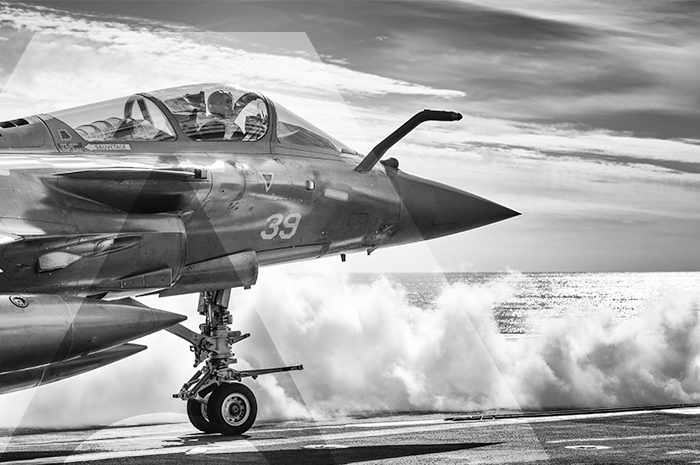Ready to fly
There are many things an air force needs in order to be able to succeed in its missions, including reliable intelligence, highly-trained pilots and support teams, and latest-generation technology, but its most important requirement is possibly both the easiest to express and the most difficult to deliver: aircraft availability. Fighter and helicopter pilots are conditioned to execute critical missions in the most demanding of conditions. However, their years of training and mission experience all count for nought if the plane scheduled to be flying is grounded.
The issue of availability is one that military forces around the world must face, and they rely on a key, trusted partner – such as Thales – to help them find a solution. That solution comes first by adopting a new approach based on performance commitment, and by leveraging digital technologies such as HUMS and predictive maintenance.
Traditionally, aircraft equipment would be replaced when they broke down. However, Thales’s proven ability to capture large amounts of data from the different systems on board the aircraft and from benches, combined with the capacity of its engineering experts to carry out detailed analysis of that data, creates a radical change in the way maintenance is now carried out.
For some time data analysis has allowed maintenance crews to identify a particular system that needs to be replaced when the plane touches down. However, predictive maintenance takes that process one important step further, by indicating when the system is likely to break down. This allows maintenance teams to intervene before the breakdown occurs, and increases aircraft availability and mission success.
Thales’s expertise in this field is crucial to the success of predictive maintenance. Not only does the company have the capability to analyse and process data, it also has decades of experience in combat aircraft systems and field operations. This in-depth knowledge of the technology, combined with access to data generated on the company’s own repair benches, makes for far more relevant data analysis and significant improvements in the success rate of maintenance predictions.
As a designer and manufacturer of electronic components and sub-systems, Thales also has a crucial edge when it comes to understanding these systems and leveraging the data they generate, right across the range of sectors of activity in which Thales operates. This means that it is also able to draw on data from other sources and environments, such as mission aircraft, helicopters, drones, satellites and maritime vessels, thus making that data both richer and unique
With all this data available, and access to powerful analysis algorithms, what is the ultimate aim?
For our customers, the ultimate goal in the years to come is 100% availability of their combat aircraft. Components are replaced before breakdowns occur, increasing aircraft availability and, by definition, mission success. And there are savings to be made on both sides – knowing when a system will need to be replaced or repaired helps us streamline our supply and repair chains; increasing aircraft availability means that the cost per flight-hour to our customers goes down.
A virtuous circle where everybody wins – who can argue with that?

Copyright : DR E2019L


